WILL FERREIRA DYKE speaks with Slade alum LIAM MERTENS about his recent group exhibitions, personal artistic practice and life as an artist post art school, Mertens working with the likes of New Contemporaries and Jealous Gallery.
Liam Mertens graduated from Slade in 2019 with a body of work consisting of a vivid tonal palette and mathematical compositions. Informed by 1960s pop art, Mertens’ work is influenced by popular culture, cinema and colour theory. Mertens keeps simplicity at the core of his practice, describing his works as ‘monumentalise[d] memories of the everyday’. Since leaving Slade he has been involved in numerous groups shows and collectives, including New Contemporaries 2020, Unit 1 Radical Residency VI, Jealous x Saatchi RIGHT HERE RIGHT NOW and Unit 3 Wild Grapes. We not only discuss these shows, but also the trials and tribulations of the life of an artist after leaving an institutional safety net.

How have you been Liam, is your week going well?
It has been a bit of a weird one. Long story short, I live on a boat, and we have just had a new oven hoisted through the skylight. So, my morning has been filled with boring domesticities.
Could you discuss your practice, perhaps talking us through the process of creating a work?
A lot of the time an idea or scenario will hit me in the most mundane places; walking to the tube or walking my dog, for instance. It could even be a message from my parents back in New Zealand which triggers my memory, or a friend’s Instagram post which will remind me of a shared moment with them, which then snowballs into an attempt to articulate this memory visually. In terms of method, I use a lot of found imagery and a kind of collage process. I use various found and stock images, from online or in books and play around with them on acetate using an old-school, overhead projector to figure out a composition. The colour choice however is more intuitive and gets worked out in the act of painting.
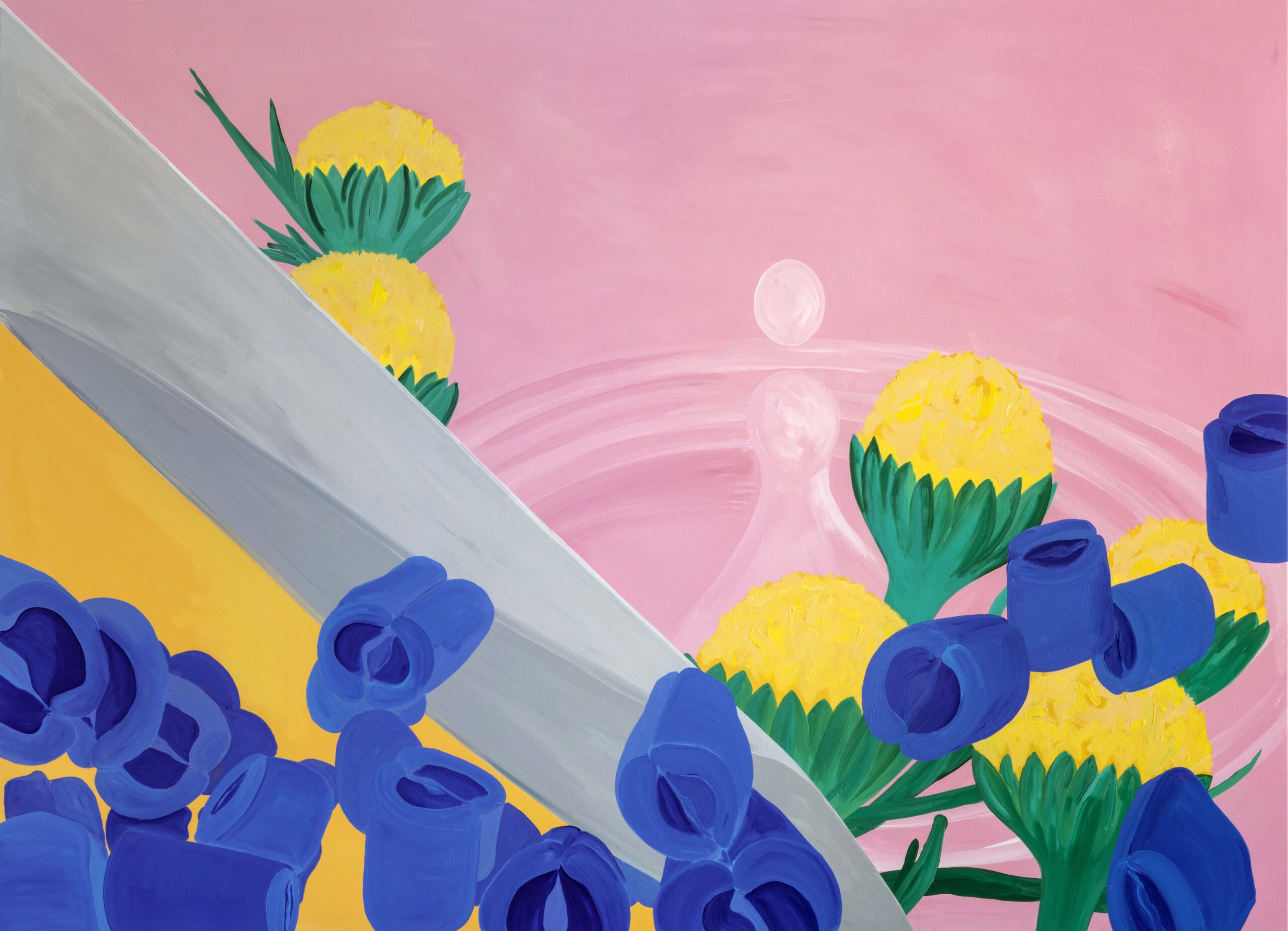
Your use of colour is exceptionally striking, and I think that’s what attracted me to your work initially. You said that your work is influenced by your New Zealand upbringing, does this run through your palette choice?
For sure. New Zealand has no ozone layer, so there is one less layer protecting you from UV rays. That means two things: firstly you get sunburnt very quickly. Secondly, colour is more saturated. Something that would appear to be very bright in the UK would be doubly so in New Zealand. Beyond atmospheric composition though, I was brought up in an extremely colourful house. The walls were never grey or white. My mother would have each room painted in different saturated hues: we had a fervid green room, a dark burgundy one and a bright blue kitchen. I would always pick a turquoise colour for my room, it was the late 90’s, early 00’s… So in terms of the everyday, I had a lot of colours in my life from an early age and have most definitely been overexposed.
I believe you graduated in 2019. How was it to leave Slade? What were the first steps you took after leaving?
Whilst preparing for my final show I was very aware that I needed a studio to house my massive paintings – I knew they wouldn’t fit on the boat! I still feel exceptionally lucky that we got to have a graduate show, and that I left Slade pre-pandemic. I feel awful for those in the years below me. I know there are far worse things, but I can’t imagine having worked as hard as we did not to have the celebratory show. Working in the studio in comparison to art school is very different. I had to adjust to the absence of other students who you become dependent on for creative progression – maybe dependency is the wrong word, but that buzz of people and happenings all around you. The studio I ended up securing is about an hour’s walk down the canal in Hackney Wick, which I now walk my dog to and he hangs out whilst I work – so I guess I still do have some company!
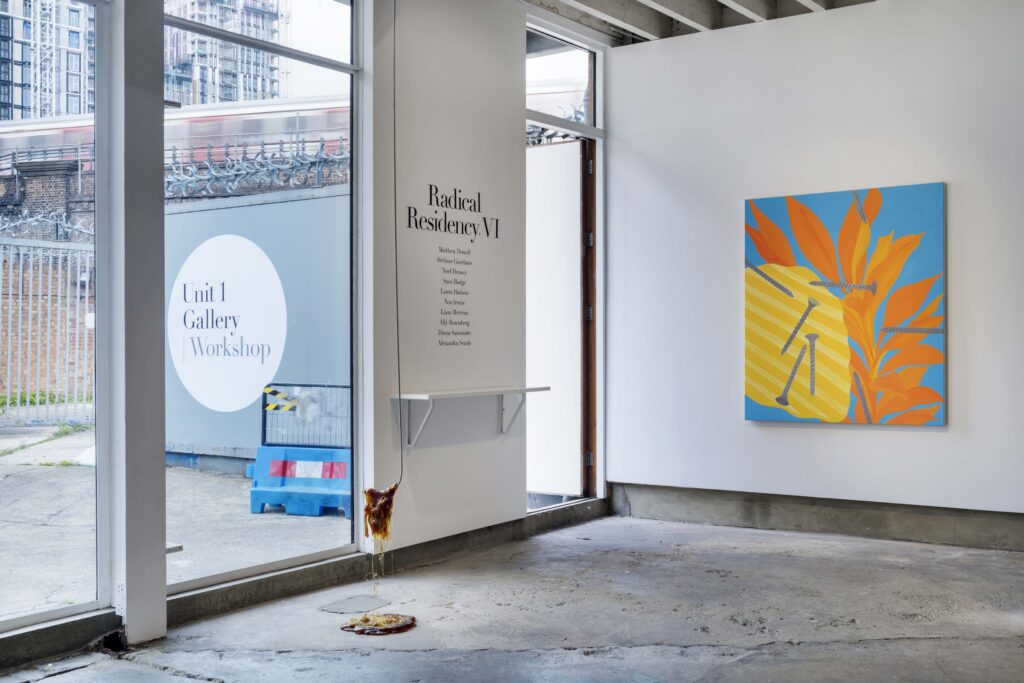
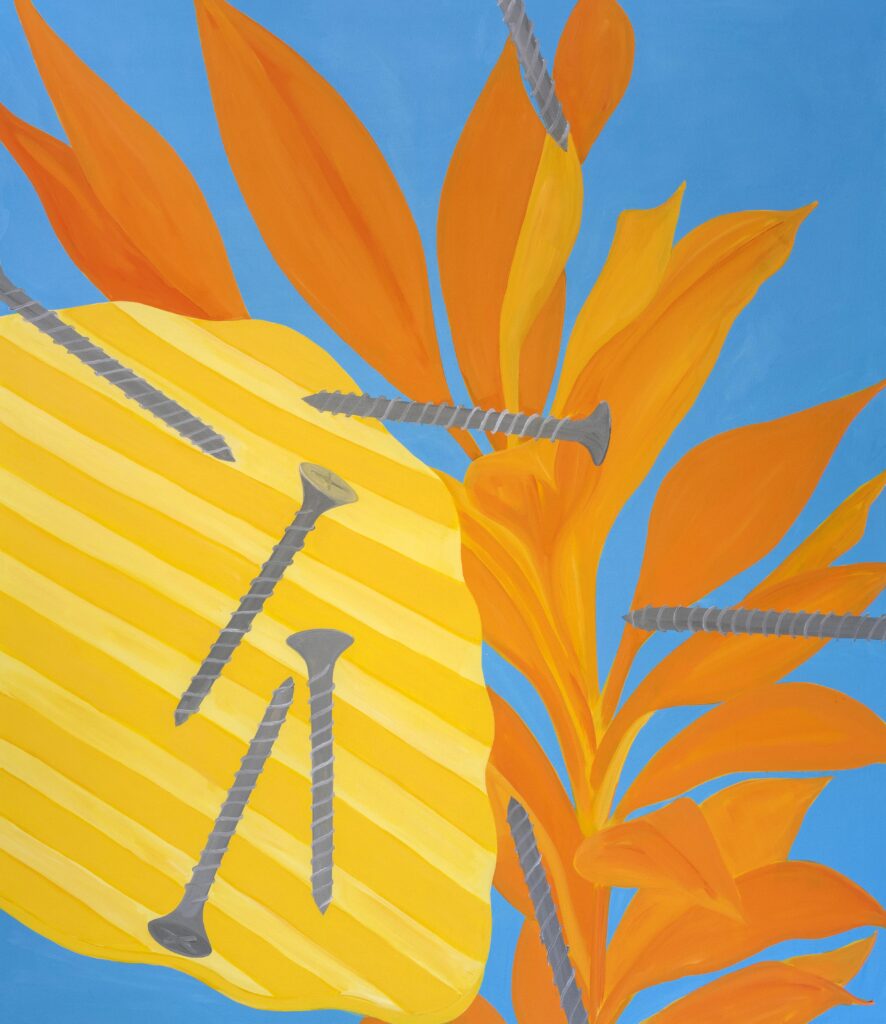
Lovely. Can you talk to me about your work with New Contemporaries, and indeed your group residency at Unit 1?
In my final year at Slade I got shortlisted for New Contemporaries, but didn’t get through to the final round. Luckily I was shortlisted again the year after and made it through, only it was in the middle of lockdown. While at Slade there is kind of a natural sharing that goes on, you’re seeing each other every day and constantly talking about things, so good and bad news is shared relatively freely, at least that was my experience. But during the lockdown I was aware that people were experiencing various hardships and successes amid the pandemic, but had less of an idea of the scale of them, so I held off telling a lot of people. I found out about getting into New Contemporaries in July 2020 and told a few close friends but kept it quiet until the official announcement
It was a strange year; we were the first to have an online platform built for us, and the satellite show due to be in Hull was cancelled. But the New Contemporaries team were so supportive and wonderful throughout and I felt well looked after, and we finally got a show in May 2021. Unit 1 was another thing entirely. They’re another great supporter of emerging artists and everyone involved is really passionate about what they’re doing. The residency was a great opportunity to work in a shared studio again, something I hadn’t had since Slade.
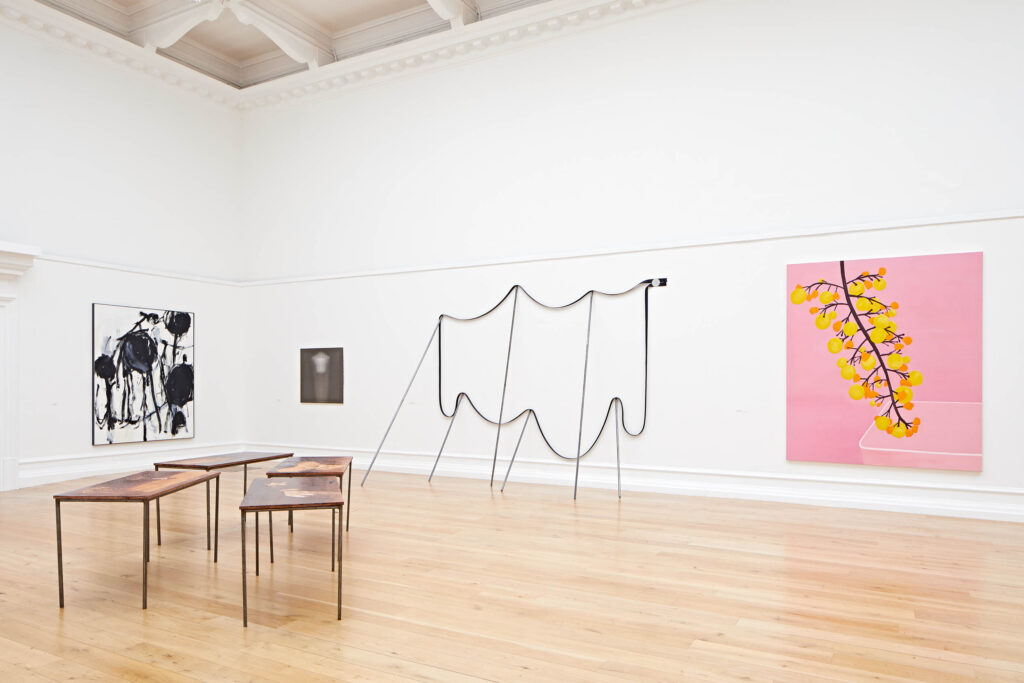
More recently I saw you were shown in the Jealous x Saatchi, RIGHT HERE RIGHT NOW exhibition, how did this come into fruition?
After graduating you typically get flooded with emails – I received one from Jealous. Every year Jealous go around London graduate shows and pick artists to work with. After seeing Watching the Past Pass (2020) they approached me about making a print of the work. Jealous are very active – I feel like this print now has a life of its own. They have since taken my work to several art fairs around London. Funnily enough, it was only during the closing day of Unit 1 that I got an Instagram notification which alerted me to the exhibition at Saatchi. I hadn’t heard anything about it up until then. I didn’t even know Jealous were working on a show at Saatchi! Jealous are, all in all, very supportive and since my grad show have always been exceptionally good to me.
Are you represented by Jealous? What is the dynamic like?
Not really, it’s just that they produce that print. Jealous champion a lot of up-and-coming artists along with some more established artists like David Shrigley. I feel privileged to have my work in the same exhibition as these big hitters.

Are your plans to be represented by a gallery or are you comfortable as is?
I mean I’d like to be, and I am always open to the idea, but the fit has to be right. I now think artists have a bit more control over their outlet with social media, which of course also has its downsides. Saying that, I’m aware that galleries have a very important function in the art world and connect new audiences to artists’ practices. Also being your own representative is a whole other job and demands a completely different skill set and a degree of separation from the work. As an emerging artist you end up wearing many hats and juggling many jobs. Obviously, I would love to have somebody to take that off my hands, but as I mentioned the fit has to be right.
Your most recent show was Wild Grapes at Unit 3 Project in Epsom. Can you chat about this?
Karolina Albright had the slot booked at the Unit 3 project space, and along with Monica Perez Vega they organised a group of us to put on an exhibition. I studied with most of the artists, so it was nice to have a show together after not seeing most of them throughout the pandemic. Since things have opened, I have seemed to have something every month, which has allowed for a certain momentum to be maintained. I’m exceptionally grateful for that and realise how lucky I am. Wild Grapes is the last thing set in stone for now, after this it’s back to the wilderness.
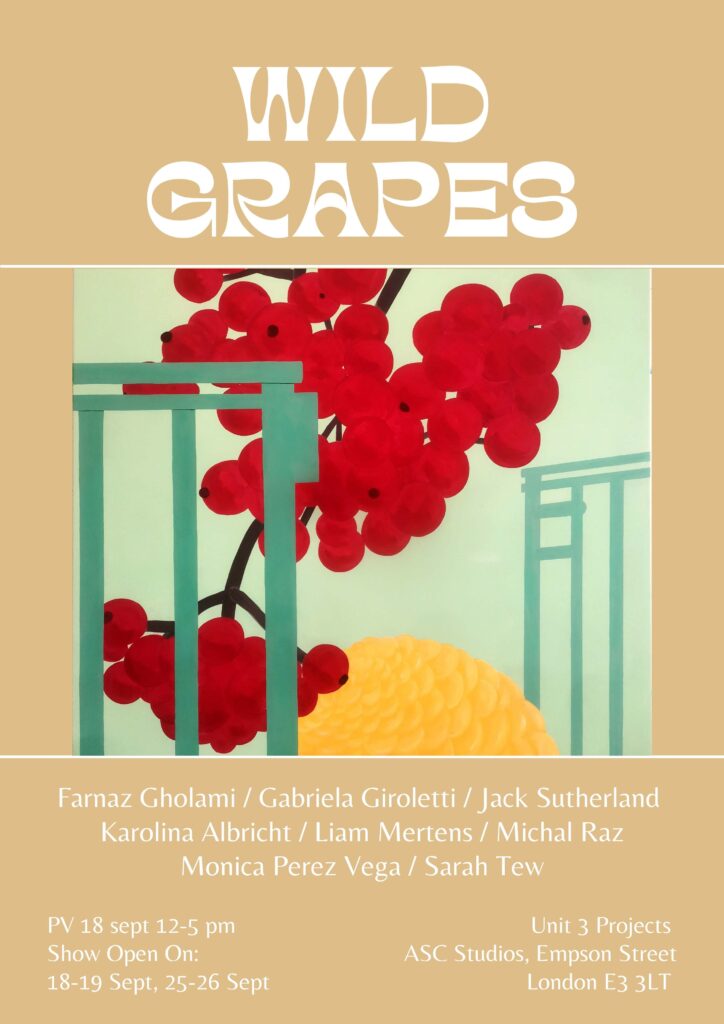
Going to Slade, do you think there is a connection between you and the other ‘Sladies’, are you more drawn to exhibiting alongside Slade alum?
Yes, for sure. I think anytime you study with people, or you study at a certain institution, there is something that binds you. There is a certain way of looking and making that connects us. You spend two years in the studio with people and you really get to know what they’re doing and why they’re doing it. What is beautiful about it is that it can challenge your idiosyncratic notions and taste. When you begin to understand something, which maybe isn’t something you’re aesthetically drawn to, through a perspective of someone you know, love and respect, then you begin to empathise and understand an alternative viewpoint. I think there is something quite powerful in this vantage point because it can bring out new aspects within your own art.
What are your plans to go forward? How do you continue to be inspired and push your art further?
I have been buying a lot of books recently. Oxfam has an amazing online book shop and they’re constantly being updated. I have subsequently spent a lot of time and money going through them all – it’s phenomenal! I’m buying mostly artist books and then the odd zine, anything that catches my eye really. I find it’s a great process for discovering ideas through the artist’s composition, or an image or work by an artist I’ve never seen before.
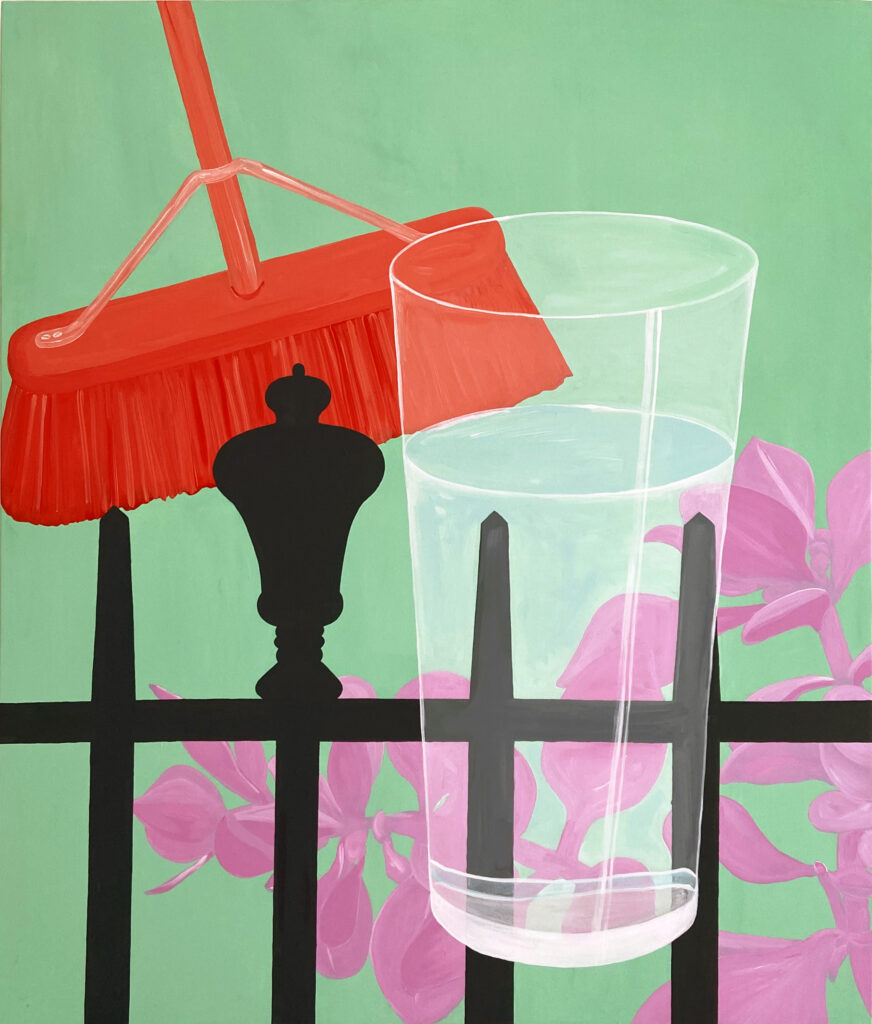
Are there any particular artists that you keep going back to?
Some of the references are obvious when I look at my work – to the point of them almost being ashamedly apparent. I will always look back towards 1960s pop artists such as Wesselman and Rosenquist. Caulfield did some great works in the 90’s. I’ll often use their work as a starting point for my own pieces, inspecting what they have done to inform the way I go about a similar subject matter or composition. I have a musical background so I often think about rhythm when creating composition. The process of bringing disparate sources together into a singular work is reminiscent of hip hop and rap music, where samples are recontextualised. I find that very inspiring, particularly in the music of Tyler the Creator, Outkast and Kanye.
Final question, If you could show your work anywhere, where would it be?
I would love to do a BIG show. Give me the best space on the planet and I’ll take it. I love the camaraderie of group shows but you’re limited to exhibiting the one work, and that work being your world within that show. I would love to take ownership over a space and really begin to flesh out the world I have created. It would simultaneously house the paintings and be transformed by the works – becoming an extension of my vision. The Guggenheim would be amazing. I saw the Hilma af Klimt: Paintings for the Future (2018-19) there a couple of years ago and was inspired because one of her wishes was for the works to be seen as if they were ascending into heaven in a spiral. For that to happen, even posthumously, is kind of incredible.
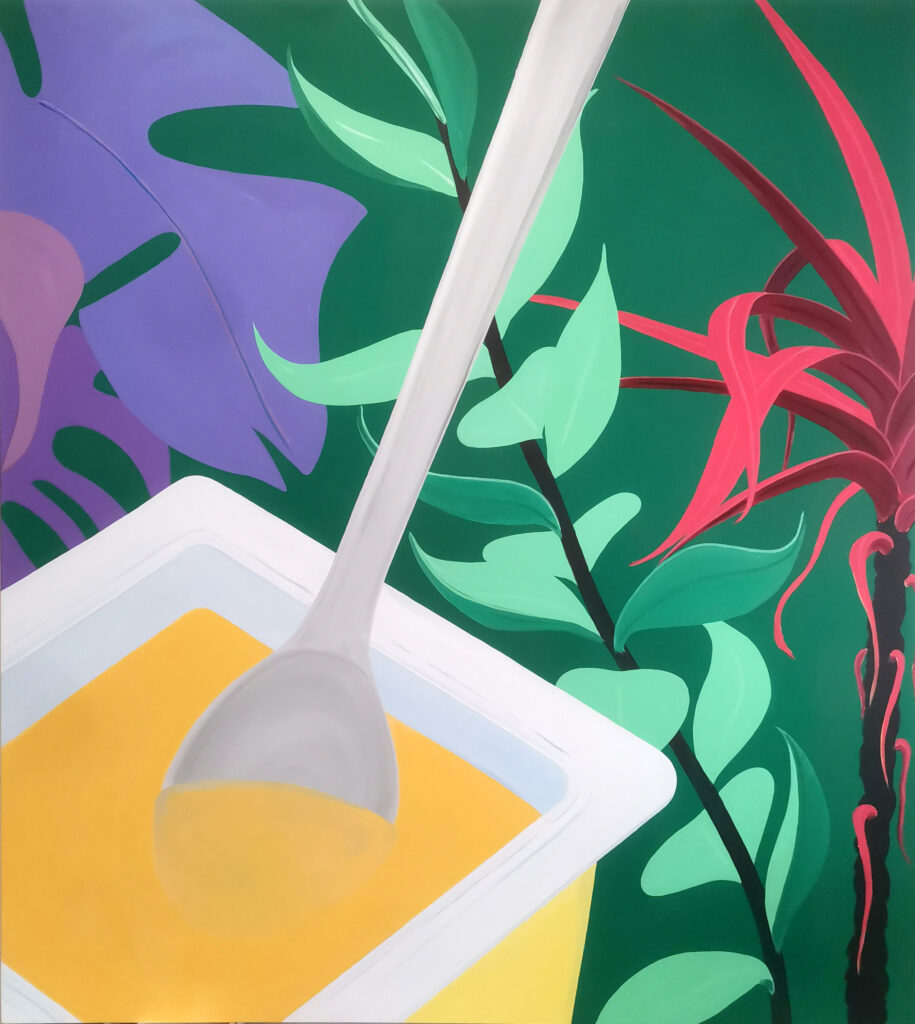
To follow Liam further follow him on Instagram or on his website here.
Cover Image: Snip (dead head), acrylic on canvas, 80x220cm, 2021.





